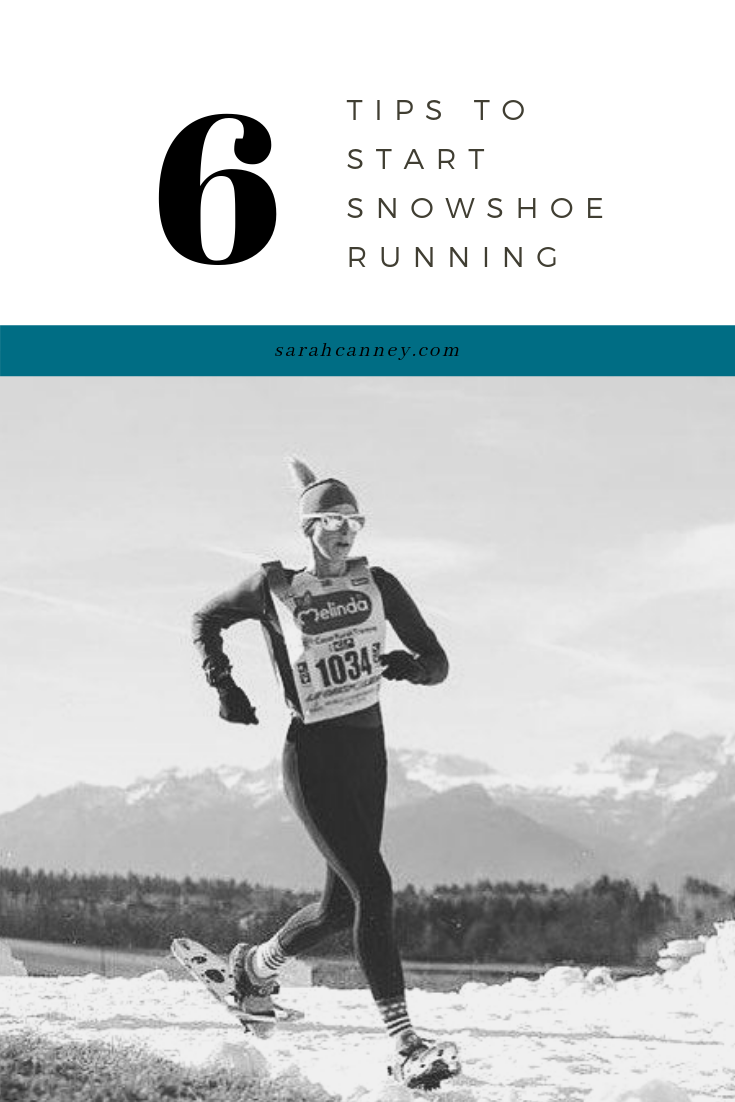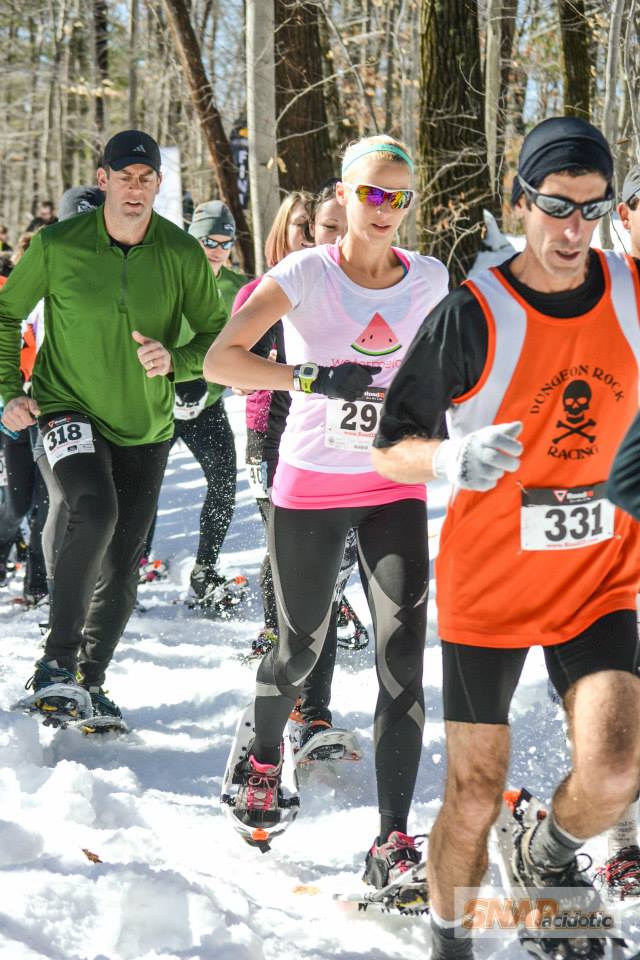6 Tips to Start Snowshoe Running
When I took the leap into snowshoe running a few years ago, I had no experience. I had run a handful of times in my LL Bean Winter Walker snowshoes (a recreational snowshoe designed for exactly what the name implies: winter walking.) Mostly to get off the roads in the winter when it was too icy or the shoulder had become obsolete-piled high with snow.
Snowshoe running is a great way to build fitness in the winter months.
Snowshoe running on the trails around my house seemed a safer option. After all, why not make it more of a workout than just walking? Then I found out about a snowshoe race series in New Hampshire called the Granite State Snowshoe Series. It turns out snowshoe running is a real thing. The more I looked into it, the more I realized some speedy road racers were using snowshoe running and racing as a way to stay fit during the winter.
Although road races during the winter months are becoming more popular in the Northeast (there's a local Freeze Your Buns Off road series) you can never count on race day: icy conditions or a snowstorm could cancel a road race very easily. But with snowshoe racing the snow is welcome and considering the crowd is a hardy bunch, many races persist even in snowy weather (like this one and this one).
Check out my beginners guide to snowshoe running HERE.
I have benefited from my experience snowshoe running and racing: I have gained fitness quickly, found a renewed passion for running and have had more fun racing than I ever have before. If you're looking to give snowshoe running and racing a try this winter here are a few tips:
It's Hard Work.
You can throw your road paces out the window. Running with snowshoes is an incredibly taxing workout, much more so than running on the road. You'll find your heart rate skyrocket in the first few steps as you put in the effort to lift your leg and the snowshoe up out of the snow. The amount of effort you exert definitely depends on the type of trail you're running on: a groomed trail or snowmobile path may be considerably easier than fresh powder. Soft and melting snow can also provide a particular challenge, even on a groomed trail (picture running through mashed potatoes). Like most things that are hard, snowshoe running is worthwhile. Snowshoe running gives you the ability to build leg strength and fitness at a time when workouts and training are often compromised due to bad weather conditions.
Snowshoe running tips
Don't over-dress
Because snowshoe running is hard work, your body temp will most likely rise quite quickly. If you over-dress you'll be a sweaty, hot mess when you're done. Select light layers that are breathable and dress as if it is 10-15 degrees warmer than the outside temperature. So if it is 25 degrees out, think of what would be comfortable at 35-40 and wear that.
Invest in good snowshoes
You might not need running specific snowshoes for training and every day runs. (In fact, I think it was perhaps helpful that I trained in my LL Bean Winter Walkers.) But I found it is essential to wear running specific snowshoes for racing, especially if you want to make the most of your experience. At the first snowshoe race I ever ran, Acidotic Racing provided DION Snowshoes for a $5 rental fee. This allowed me to try the running snowshoes before making the purchase myself. All I had to do was reserve them prior to the race.
If you can't rent running shoes, try to borrow a pair to find out if it is something you're going to want to keep doing. If you fall in love with it, like I did, then invest in a pair of DION Snowshoes. They are the best running and racing snowshoes out there, in my opinion.
Footwear
You can wear trail shoes or regular running shoes. There's no need for special boots -- in fact the extra weight will be a real drag. A water proof trail shoe is a great way to go. Typically I wear the Topo Athletic Hydroventure, which is both lightweight and waterproof. If you don't have trail shoes, you can wear any running shoe. Simply tape up the toe box with Duck tape to help keep feet dry and warm. Wearing a good pair of wool or wicking socks is a good idea because your feet will get wet. My favorites are Smartwool and Darn Tough.
You're Gonna Get Wet
Depending on the conditions, you're most likely going to get soaking wet during the race. Bring a change of clothes to the race. A dry pair of pants, socks and shoes should do. You won't want to sit around in cold, wet running clothing after the race or on the drive home. I found that I fell frequently during my first snowshoe race and kicked up a lot of snow. I was completely soaked afterwards. If there is fresh powder, consider wearing a running skirt or a pair of shorts over the top of your tights. The powder sometimes kicks up and clings to your butt, making things a little (or a lot) uncomfortable.
FullSizeRender 69
Trail Etiquette
There's a bit of trail etiquette in snowshoe racing that you may not be familiar with if you're coming from road running. Many snowshoe races contain sections of single track, that twist through the woods often making for tight racing conditions. If there's someone behind you, dogging your ever step and they are clearly faster than you the courteous thing to do is step aside and let them pass. If you're really competitive and looking to place, be aware of where you seed yourself at the beginning of the race. There's a bit of strategy that comes with snowshoe running-getting out fast can be important and help you avoid congestion. Seed yourself well at the start of the race and you won't have too many issues.
snowshoe running
A great resource for all things snowshoe running and racing: the United States Snowshoe Association (USSSA) you can also find them on Facebook and Twitter.
Looking for an event near you? Check out this interactive map
Want to know how to train for your first snowshoe race? Check out this post HERE.
Have you ever participated in a snowshoe race? What did you learn and how did it change your running? What tips do you have?
Sarah






